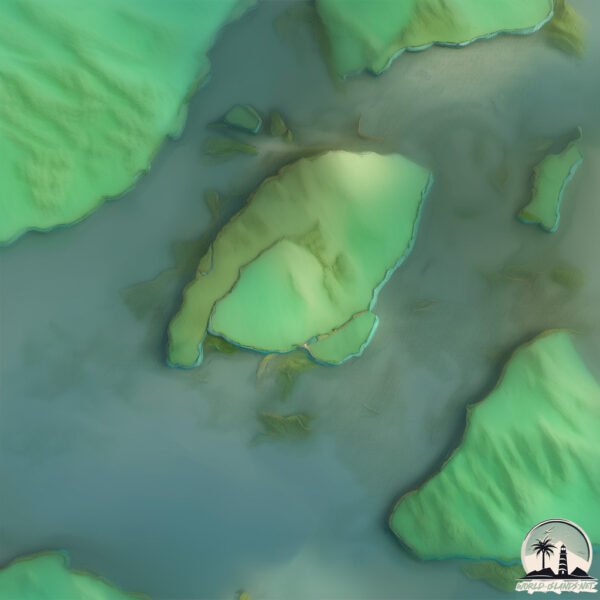Welcome to Île des Hippos , a Tropical island in the South Atlantic Ocean, part of the majestic Atlantic Ocean. This guide offers a comprehensive overview of what makes Île des Hippos unique – from its geography and climate to its population, infrastructure, and beyond. Dive into the details:
Geography and size of Île des Hippos
Size: 6.458 km²Coastline: 14.7 kmOcean: Atlantic OceanSea: South Atlantic OceanContinent: Africa
Île des Hippos is a Small Island spanning 6.5 km² with a coastline of 14.7 km.
Archipel: –
Tectonic Plate: Sunda – Extends across Southeast Asia, encompassing parts of the Sunda Shelf, known for its interaction with the Australian Plate, contributing to volcanic activity in Indonesia.
The geographic heart of the island is pinpointed at these coordinates:
Climate and weather of Île des Hippos
Climate Zone: TropicalClimate Details: Tropical Savanna, WetTemperature: Hot
Climate Characteristics: Defined by distinct wet and dry seasons with high temperatures year-round. Pronounced rainfall occurs during the wet season, while the dry season is marked by drought.
Topography and nature of Île des Hippos
Timezone: UTC+01:00Timezone places: Europe/ParisMax. Elevation: 4 m Mean Elevation: 3 mVegetation: Evergreen Broadleaf ForestTree Coverage: 46%
The mean elevation is 3 m. The highest elevation on the island reaches approximately 4 meters above sea level. The island is characterized by Plains: Flat, low-lying lands characterized by a maximum elevation of up to 200 meters. On islands, plains are typically coastal lowlands or central flat areas.
Dominating Vegetation: Evergreen Broadleaf Forest
Vegetation: 7 vegetation zones – Very Highly Diverse Island
Infrastructure and Travelling to Île des Hippos
Does the island have a public airport? no .
Does the island have a major port? no .
The mean population of Île des Hippos is 46 per km². Île des Hippos is Gently Populated. The island belongs to Dem. Rep. Congo .
Continuing your journey, Île de Mateba is the next notable island, situated merely km away.
The Island of the Hippos | A Rare Adaptation
Discover the extraordinary world of coastal hippos in The Island of the Hippos. This documentary unveils a unique population of ...
The Island of the Hippos | A Rare Adaptation
Discover the extraordinary world of coastal hippos in The Island of ...
Discover the extraordinary world of coastal hippos in The Island of the Hippos. This documentary unveils a unique population of ...
AFRICAN ELEPHANT ISLAND! Wild Hippos and Nile Crocodiles!
Chris is in Africa, looking for Nile Crocodiles. It is the worst dry ...
Chris is in Africa, looking for Nile Crocodiles. It is the worst dry season in years, so African elephants are traveling from ...
Ascension Island - HippoMap Geo Tour!
Capitals of all countries and territories of the World - 1st stop: .ac ...
Capitals of all countries and territories of the World - 1st stop: .ac - Ascension Island! Learn about the geography of this place, how ...
Dem. Rep. Congo is classified as Least developed region: Countries that exhibit the lowest indicators of socioeconomic development, with the lowest Human Development Index ratings. The level of income is Low income.
News – Latest Updates and Headlines from Île des Hippos
Stay informed with the most recent news and important headlines from Île des Hippos. Here’s a roundup of the latest developments.
Loading...
Please note: The data used here has been primarily extracted from satellite readings. Deviations from exact values may occur, particularly regarding the height of elevations and population density. Land area and coastline measurements refer to average values at mean high tide.

